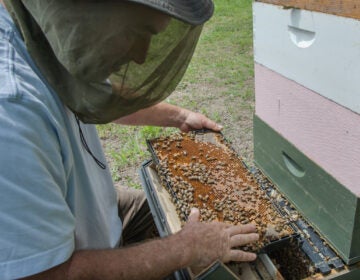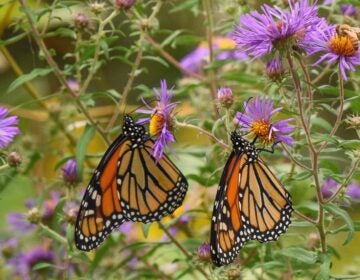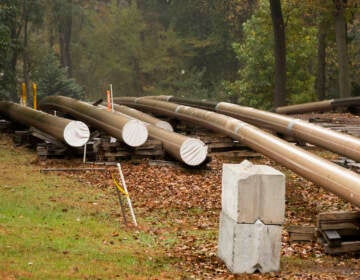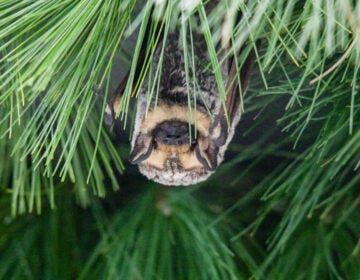King of Prussia District is abuzz with honeybees hard at work
The district’s hives are part of a nationwide trend to place bees in commercial spaces.
From Delco to Chesco and Montco to Bucks, what about life in Philly’s suburbs do you want WHYY News to cover? Let us know!
On weekday mornings, as thousands of corporate employees file into the offices at Renaissance Park in King of Prussia ready to start their day, a quieter workforce is already laboring nearby.
A short walk from the building entrances, on a grassy median strip in the parking lot, more than 50,000 honeybees are pollinating plants and supporting biodiversity within a 5-mile radius.
For the fourth year, King of Prussia District — an organization established in 2010 by Upper Merion Township that works to drive resident, corporate and investor confidence in King of Prussia — has installed hives at Renaissance Park and Moore Park to benefit the environment, employees and nearby residents.
Chris Basler, director of projects and planning for King of Prussia District, said they launched the beekeeping program in the aftermath of the COVID-19 pandemic.
“We were interested, as we always are with our programs, adding amenities and unusual experiences in the business park, so that not only the residents, but also the employees, are able to come out and enjoy them on a regular basis and have something that brings them out beyond their offices,” he said.
The organization is not alone in turning to bees to make the workplace more attractive. Commercial spaces throughout the country have signed on to the trend.
Kristen Rydberg, territory lead at Alvéole, the Montreal-based commercial beekeeping company that tends to the district’s hives, said their business has grown beyond North America in recent years. It’s becoming “more commonplace,” she said, to see a honeybee hive in a local park, workspace or neighborhood. Beekeeping has also grown in urban environments, as several major cities, including New York City and Los Angeles, have legalized urban beekeeping in the last 10 to 15 years.
“We realized we can’t have green cities and healthy, thriving ecosystems without pollinators,” Rydberg said. “It all really started with the root of bringing nature back into the urban environment and being able to support greener cities. It’s evolved a lot, and COVID was, I think, a big part of the evolution, the push of return to office and people working remote, and how can we make our workplaces healthier, happier, more attractive to top talent, bring people who back into the office, bring them back into their community spaces.”

King of Prussia District’s hives are among the company’s 38 clients in the Philadelphia area. Worldwide, Alvéole tends to bees on more than 3,000 client sites in the United States, Canada and Europe.
“It’s offering nature in the workplace,” Rydberg said. “And so it’s evolved a lot to … having these other amenities that help with healing, attraction, excitement, and as we continue to evolve, I think biodiversity is where a lot of attraction is now for a lot of our clients.”
Basler said the bees complement the district’s efforts to plant flowers and vegetation on commercial properties in the area. One of the most surprising facts about bees that Basler said he learned was that they travel up to 5 miles from their hive to pollinate and gather food.
Rydberg said that because of their wide-ranging travels, honeybees can actually serve as data collectors on biodiversity that Alvéole can use to generate reports for their clients, some of whom might then use that data to obtain green building credits or show how much they’re impacting the local ecosystem.
“We can turn around to our clients, we can sample their honey and actually give them a kind of biodiversity portfolio and show them what is around,” she said.
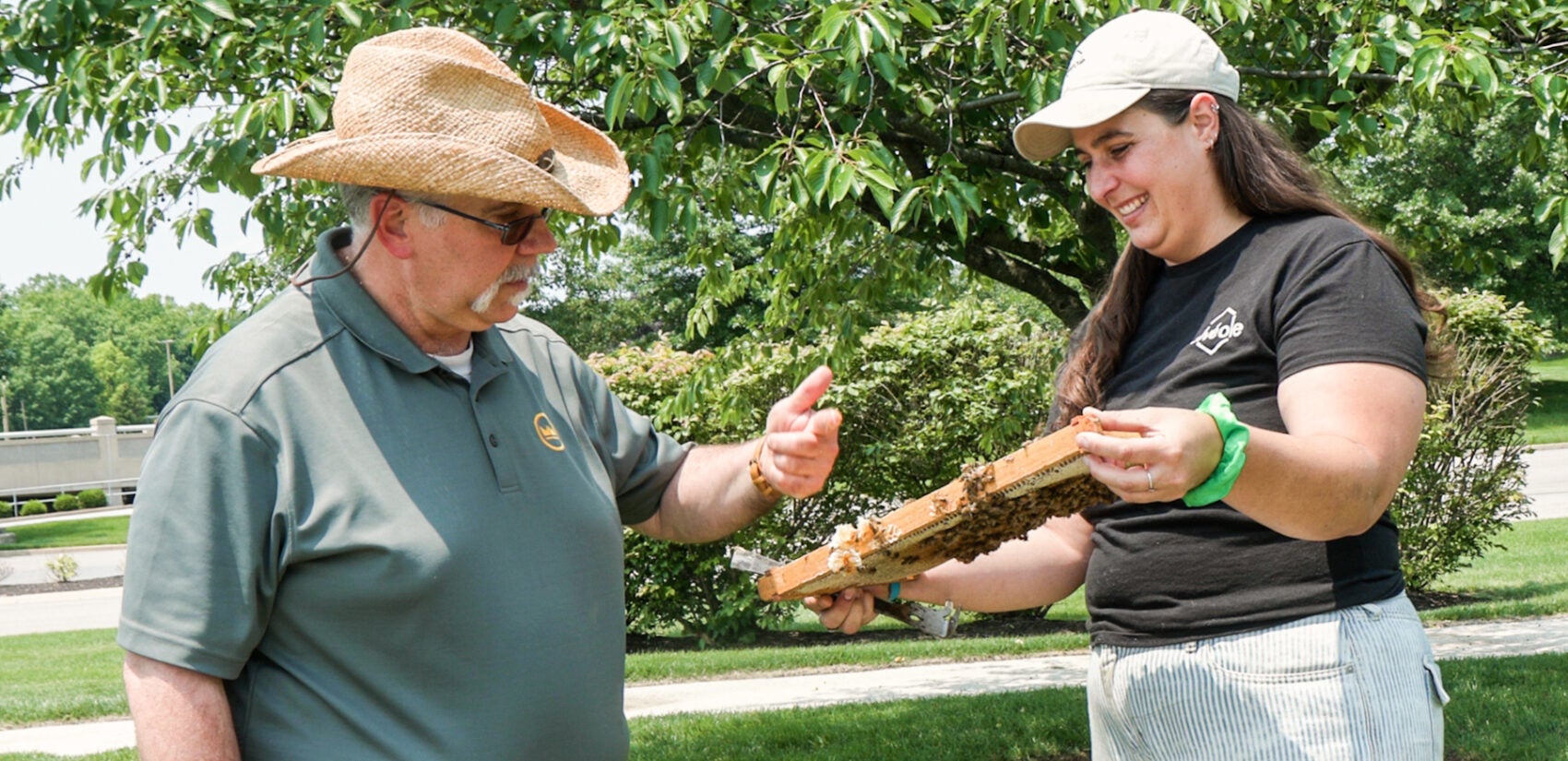
Inside the hive
On a scorching June day, urban beekeeper Tanner Alcorn of Alvéole pours smoke into the beehive at Renaissance Park, the fumes working to distract the tens of thousands of bees buzzing inside. He waits a few minutes before lifting the lid of the wooden rectangular structure, called a Langstroth hive, which was invented in 1851 by Philadelphian Lorenzo Langstroth. With its moveable frames, Langstroth hives are now the most common beehive structure used in commercial beekeeping throughout North America.
Alcorn checks King of Prussia District’s two hives every three weeks from spring through the fall in a maintenance visit that employees and residents are able to attend.
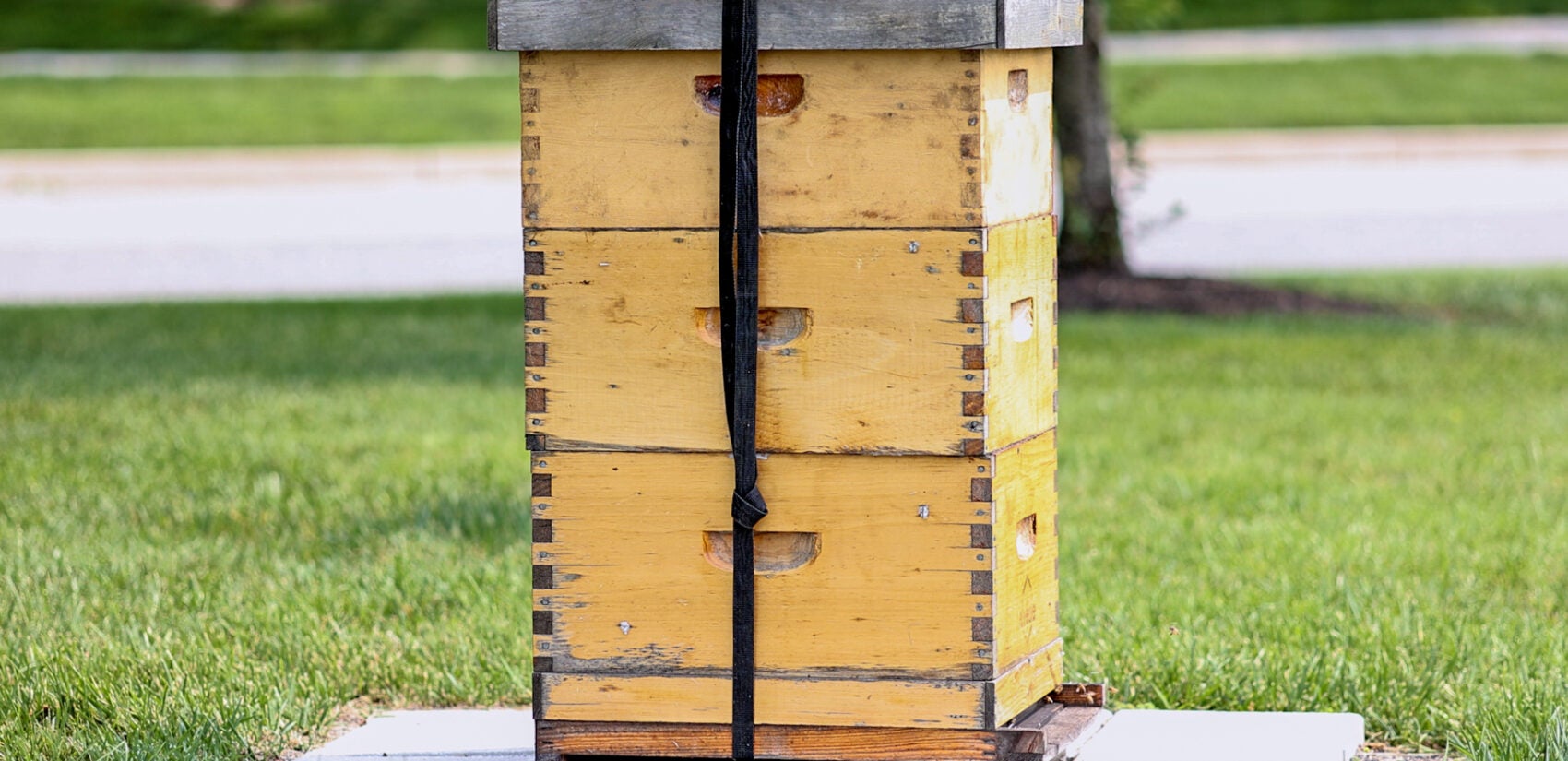
As he pulls out one of the moveable frames, Alcorn has a checklist of three things to look for to make sure the hive is healthy: population, brood and resources.
“I want to make sure that there’s a healthy-sized population, and that’s going to include kind of looking for the queen,” he said.
In the Renaissance Park hive, there are approximately 45,000 female worker bees, which do the bulk of activities people tend to associate with honeybees.
“They go out and they do the pollinating, they collect the nectar and the pollen and they build all the wax in the hive,” he said. “They tend to the baby bees. They keep the brood healthy and happy.”
Then there are a few thousand male drone bees, whose main role is to mate with queens, Alcorn said.
Last but not least, Alcorn likes to look for “probably the biggest player on the field,” the queen bee, when he is checking a hive.
“She lays all the eggs. She really keeps the hive alive, right?” Alcorn said, noting that the queen bee is usually twice the size of the female worker bees. “She lives significantly longer than an average honeybee, so she’s really the mainstay throughout the life of a hive. She’s gonna spend three to five years basically in there, just laying eggs, keeping the population healthy and growing when it needs to.”
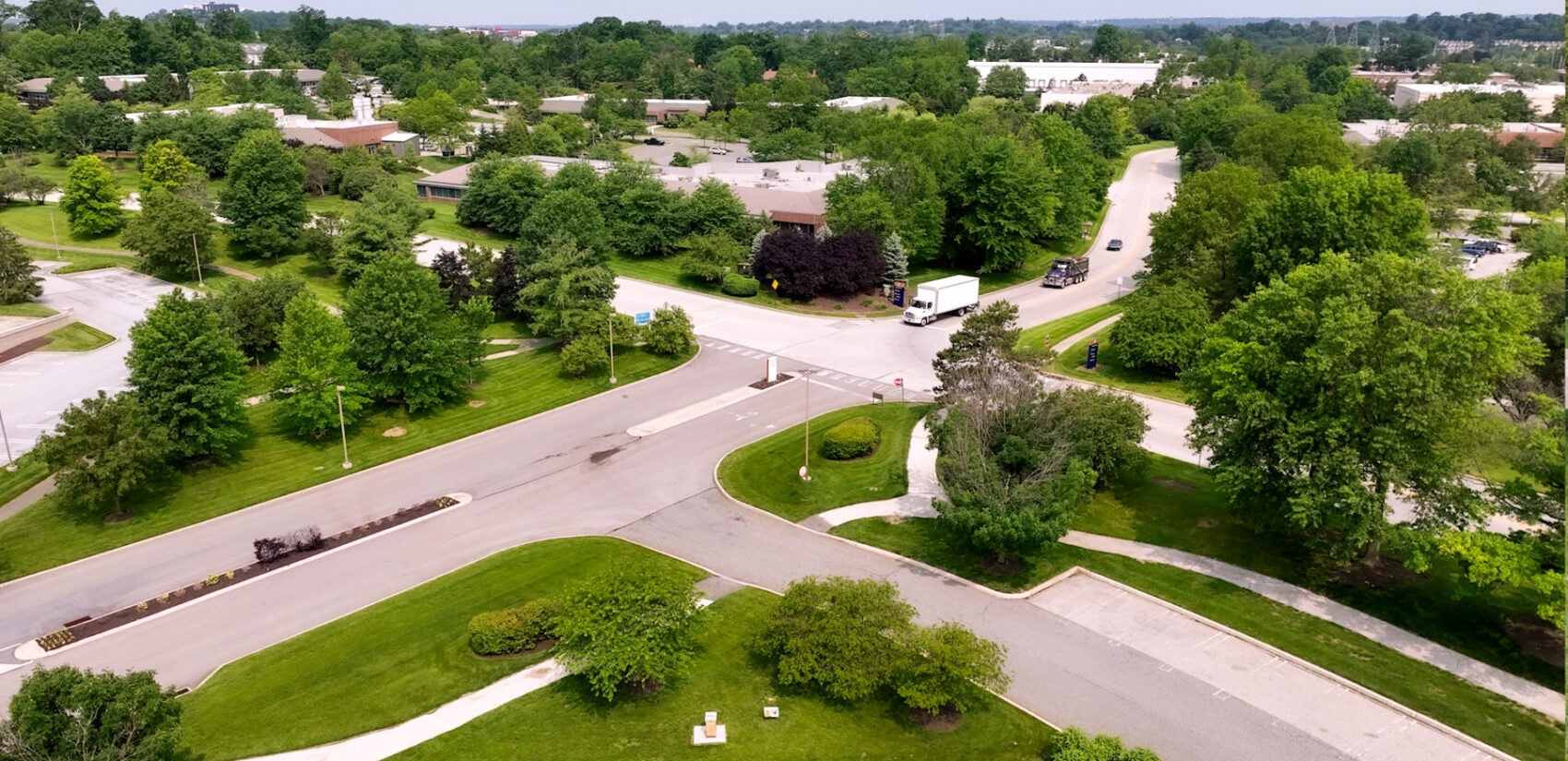
Even if Alcorn isn’t able to spot the queen bee, he knows she’s doing well as long as he sees the brood, which is the name for the eggs, pupae and larvae that will eventually hatch.
“When you have a box full of 50,000 bees, you can’t always find the queen, which, you know, we love to see her,” he said. “But practically speaking, one bee in those tens of thousands is not always going to pop up. So if I’m able to see eggs and brood, I’m going to know she’s in there, and that’ll suffice.”
The last feature to check, Alcorn said, are the hive’s resources.
“I want to see that they’re starting to produce honey this time of year, which we’ll see visually as liquid nectar that they’re collecting from the flowers,” he said. “I’m going to look for pollen, which we can probably see these cute pants on a lot of the worker bees, carrying in these big yellow balls of pollen. And then additionally, something in the hive called ‘bee bread,’ which is kind of how they feed each other in the short term. They use it to keep everybody healthy and happy. And that’s basically compacted pollen as well.”
The district offers workshops to get up close and personal with the bees, and encourages employees and residents to stop by during Alcorn’s maintenance visits.
A female-dominant superorganism with ‘healing energy’
Alcorn and Rydberg got into beekeeping around 2020, and each started with a hive in their backyards.
Rydberg, who had to first overcome a fear of bees she had inherited from her mother, fell fast and hard for beekeeping and said she is “pretty darn addicted at this point.”
“The first moment that I ever had inside of a hive, I was just covered,” she said. “There was just a swarm of thousands of bees around me, and it was this click, not one of them cares that I’m here. Not one of them wants to sting me. They’re doing their own thing. And that evolved into something so much more.”
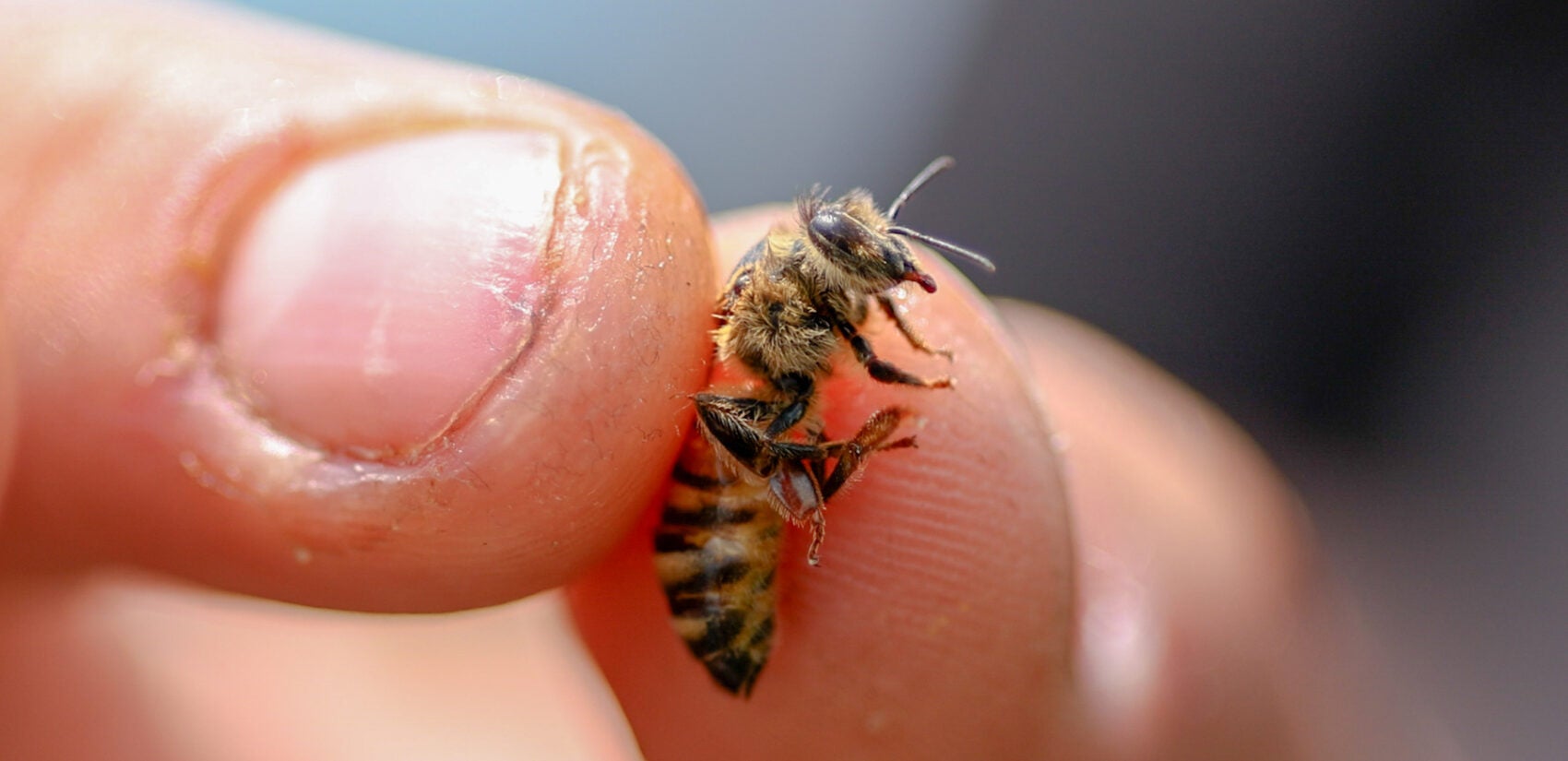
For Rydberg, who in addition to her work with Alvéole tends to 20 hives in her own backyard in the Bronx, there is a “spirituality” to working with bees.
“Each individual bee isn’t actually an individual,” she said. “They’re part of an individual. So every honeybee hive is a superorganism. So to see this female-dominant superorganism that’s working perfectly together, perfect architects, it’s really just, it’s so addictive to watch, to be a part of, it’s healing. They say that beekeepers have the longest lifespan because of the vibrations, because of the cleansing, the smelling [of] the hive.”
Rydberg said part of her goal as an urban beekeeper is to educate more people about the importance of bees and help them overcome fears about the insects.
A 2017 report from the Center for Biological Diversity found that although honeybees are not endangered, the populations of more than half of native bee species in North America and Hawaii are in decline.
“Honeybee hives are extremely important for our food systems, for green cities,” Rydberg said. “70% of the food that we actually eat [is] because of honeybees. That includes coffee, chocolate, most of our fruits. Basically the things that we would be left with are wheat, potatoes, so society would eventually just carb out and die if we didn’t have honeybees.”
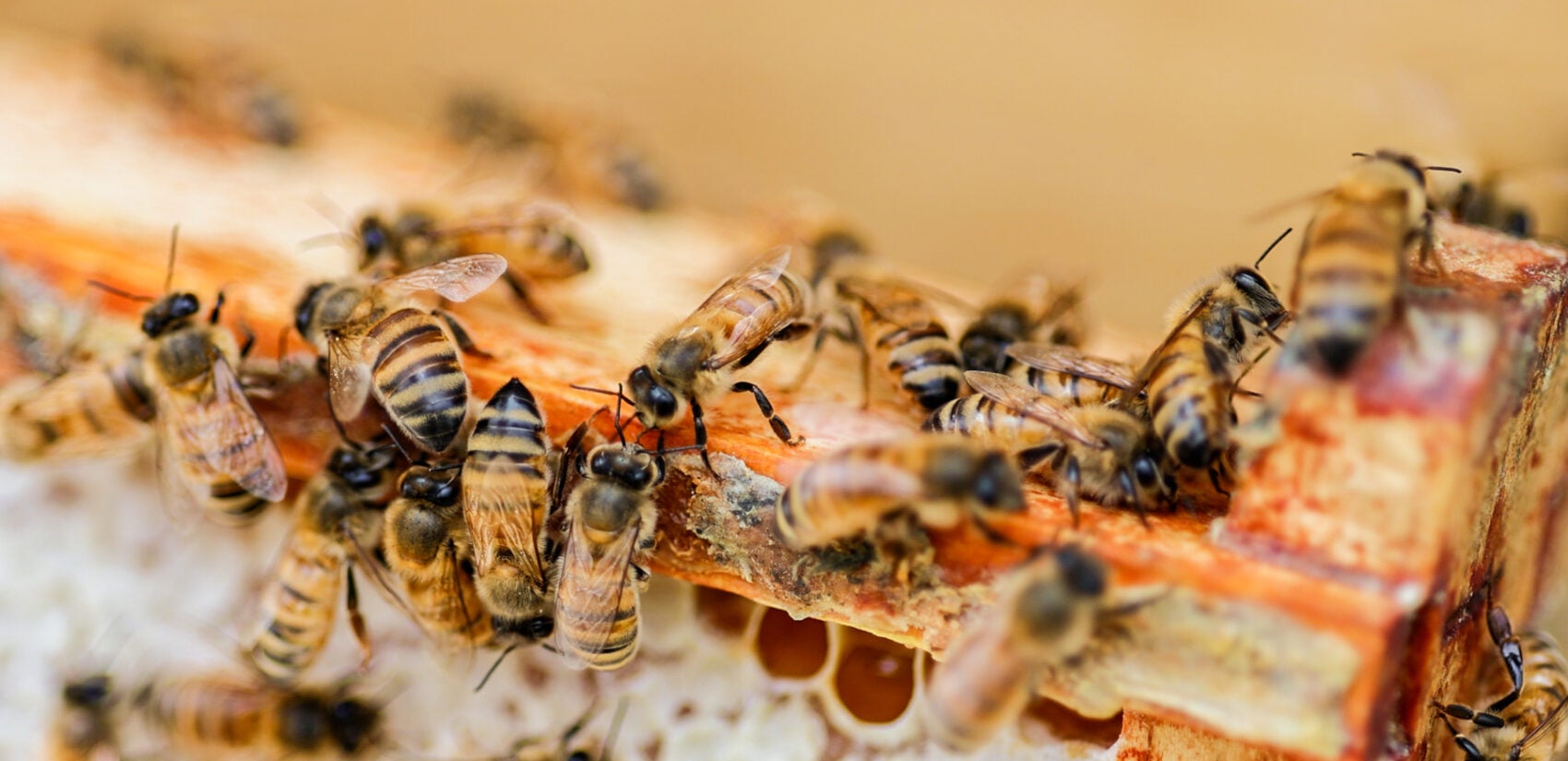
She said other bee species, including bumblebees and mason bees, are also vital to sustaining local ecosystems because they’ve evolved to pollinate and support native and wild plants.
“If you like green spaces, if you like food other than potatoes, I mean, they’re extremely important,” Rydberg said.
She said that as beekeeping has expanded, the community of beekeepers has grown more diverse.
“It’s been really cool to see in like modern times, in the last 10 years, so many female, so many different genders, different ages, different people coming into the beekeeping world and really bringing this holistic, beautiful energy just to everyone, and making it so much more accessible,” she said.
Members of the public can check King of Prussia District’s website for a schedule of maintenance visits and workshops at both hive locations.

WHYY is your source for fact-based, in-depth journalism and information. As a nonprofit organization, we rely on financial support from readers like you. Please give today.



